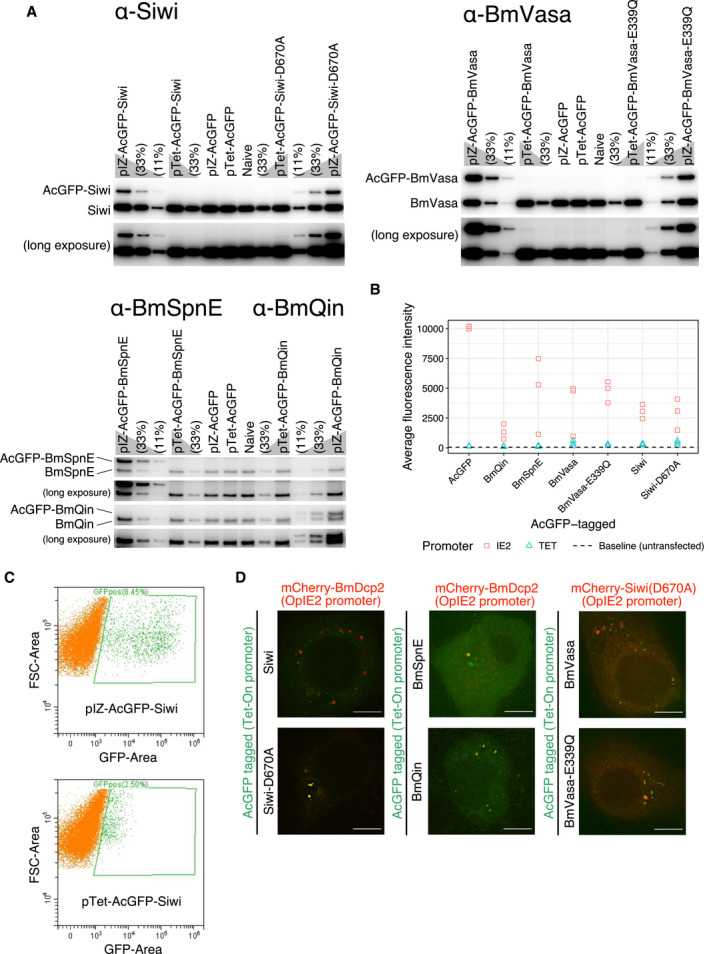Figure EV2. Reduction in protein expression level with Tet‐On inducible promoter.

- Western blotting of endogenous counterparts and the epitope‐tagged version of the protein‐of‐interest (POI), either expressed by an OpIE2 promoter (pIZ) or a Tet‐On system (pTet). Most of the pIZ constructs express epitope‐tagged POI (upper bands) at levels comparable to the endogenous counterparts (lower bands) and all of the pTet constructs express POI at significantly lower levels than the pIZ constructs and the endogenous counterparts.
- Relative whole‐cell fluorescence intensity of AcGFP‐tagged POI expressed by an OpIE2 promoter (pIZ) or a Tet‐On system (pTet).
- Flow cytometry analysis of pIZ‐AcGFP‐Siwi or pTet‐AcGFP‐Siwi transfected cells. Naive BmN4 was used as a negative control (0.18% GFP‐positive cells (GFPpos); See Appendix Figure S1). pIZ construct yielded 8.45% GFPpos, while pTet yielded 2.5% GFPpos that were roughly 30–100 folds dimmer than pIZ‐GFPpos. FSC: Forward scatter. For the gating strategy, see Appendix Figure S1.
- Colocalizations of Siwi‐D670A, BmSpnE, and BmQin with BmDcp2, or BmVasa‐E339Q with Siwi‐D670A were not affected by the reducing POI expression level with pTet. Scale bar 10 μm.
